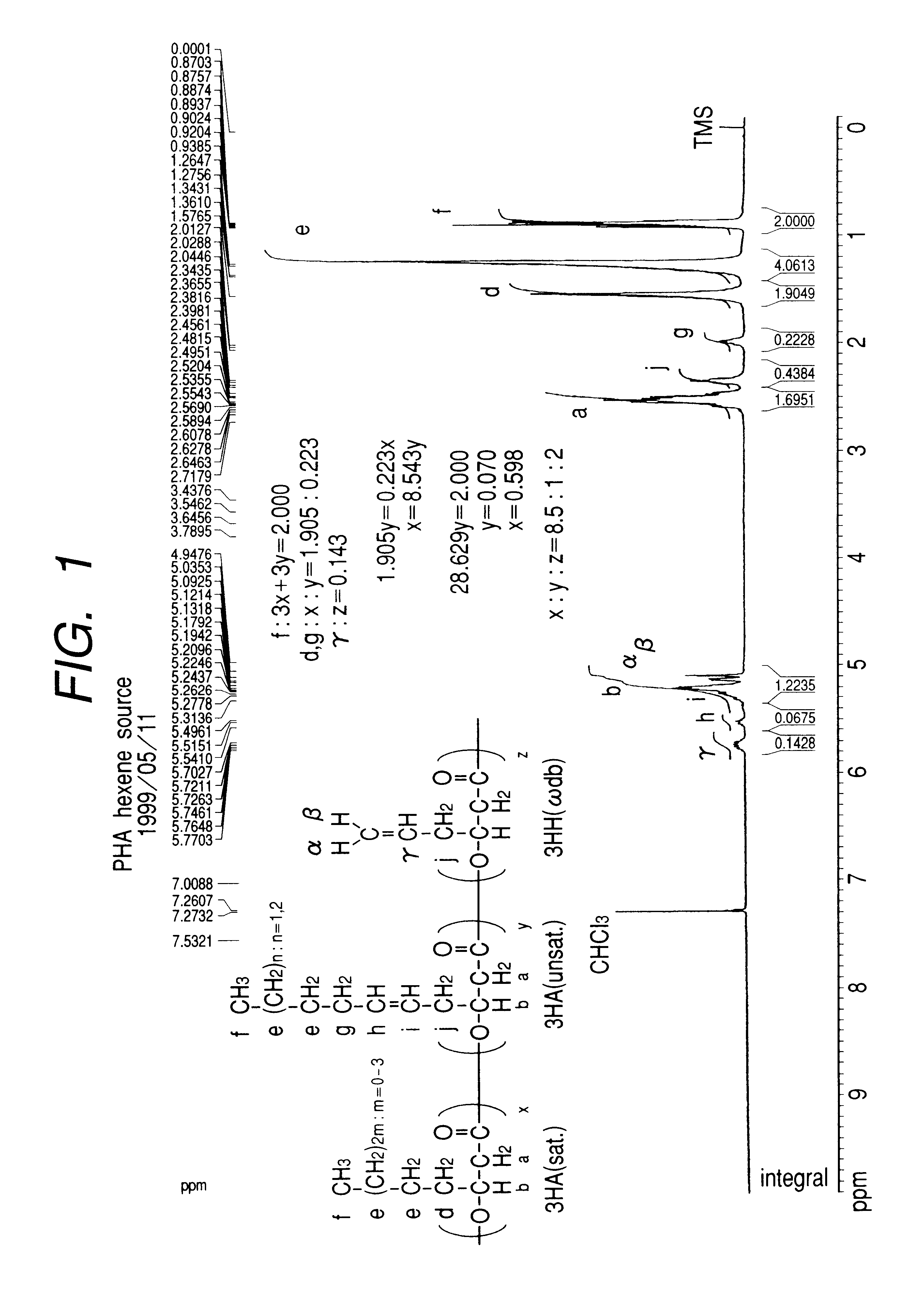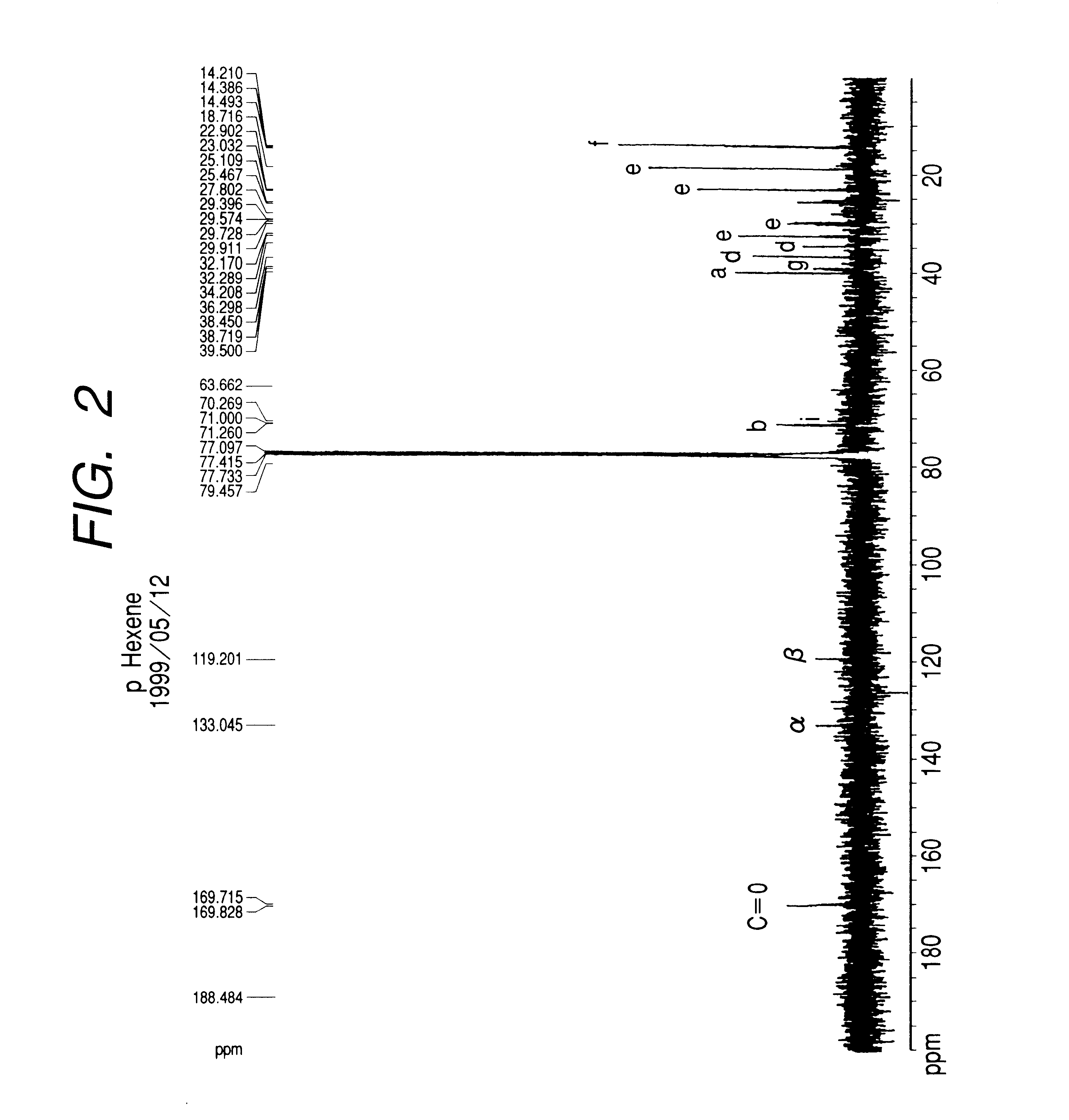Method for producing microbial polyester
a technology of polyester and microorganisms, applied in the field of polyester production methods, can solve the problems of insufficient studies on the use of organic substrate materials derived from relatively inexpensive minerals such as petroleum
- Summary
- Abstract
- Description
- Claims
- Application Information
AI Technical Summary
Problems solved by technology
Method used
Image
Examples
Embodiment Construction
PHA Production by Culturing Strain YN2 with 1-Hexene Carbon Source
Strain YN2 was grown on an M9 agar medium containing 0.1% yeast extract, and a colony was taken and suspended in a sterilized physiological saline to prepare a cell suspension of OD.sub.600 1.0.
The suspension was spread on 20 plates of 1 / 10N-M9 agar not containing a carbon source, and the plates were incubated at 30.degree. C. under 1-hexene atmosphere.
After 4 days incubation, cells were collected, washed with methanol, and the collected cells by centrifugation was dried under a reduced pressure. The dry weight of the cells was 150 mg.
To the dried cells, 50 ml of chloroform was added and stirred at 50.degree. C. for 24 hrs to extract PHA. The chloroform layer was filtrated, concentrated by an evaporator. Cold methanol was added to remove the precipitate, which was then dried under a reduced pressure. Thus, 68 mg of dried PHA was obtained. The PHA weighed to about 45% of the dried cell weight.
The composition of the obt...
PUM
| Property | Measurement | Unit |
|---|---|---|
| temperature | aaaaa | aaaaa |
| temperature | aaaaa | aaaaa |
| dry weight | aaaaa | aaaaa |
Abstract
Description
Claims
Application Information
 Login to View More
Login to View More - R&D
- Intellectual Property
- Life Sciences
- Materials
- Tech Scout
- Unparalleled Data Quality
- Higher Quality Content
- 60% Fewer Hallucinations
Browse by: Latest US Patents, China's latest patents, Technical Efficacy Thesaurus, Application Domain, Technology Topic, Popular Technical Reports.
© 2025 PatSnap. All rights reserved.Legal|Privacy policy|Modern Slavery Act Transparency Statement|Sitemap|About US| Contact US: help@patsnap.com


